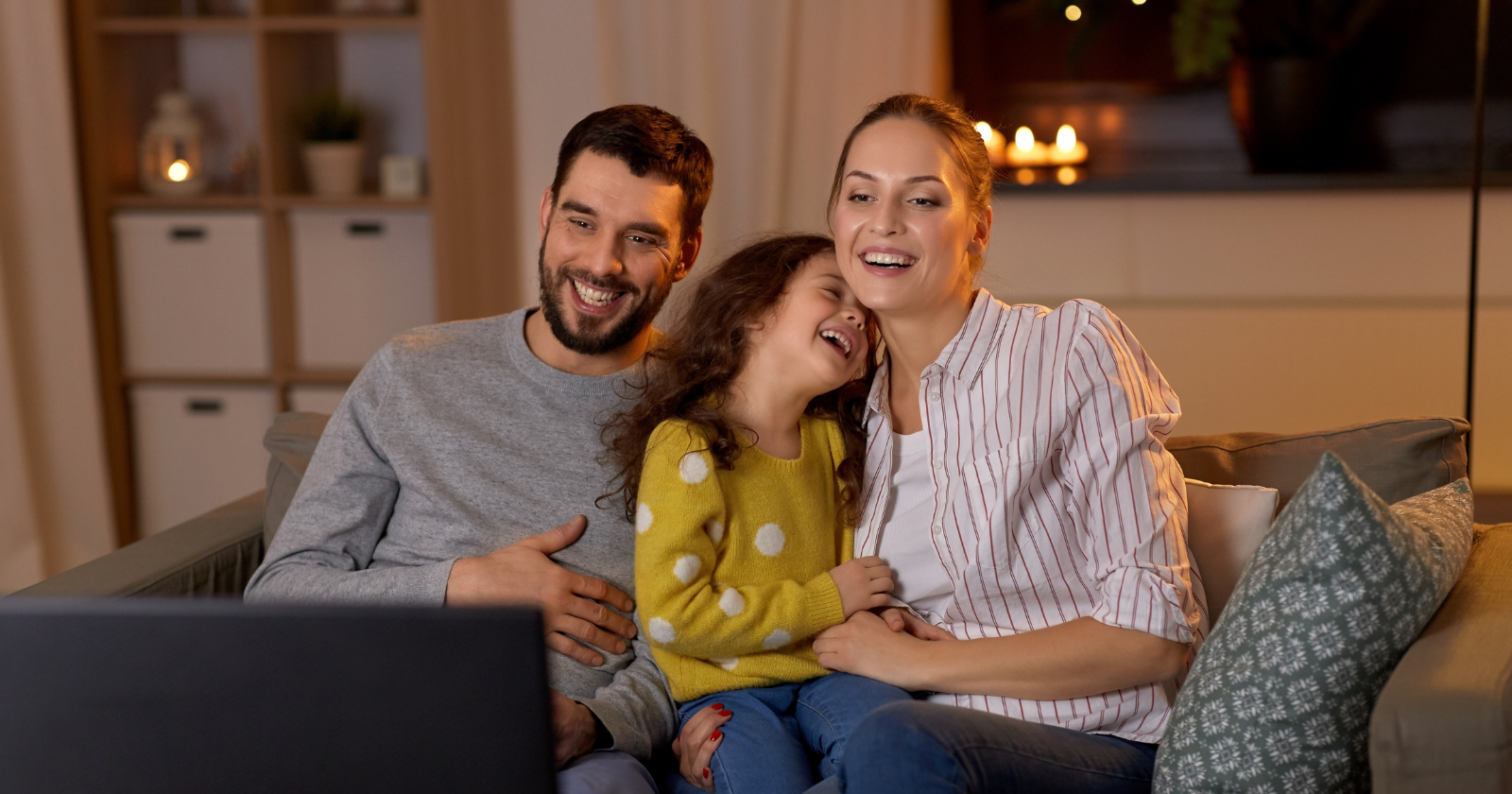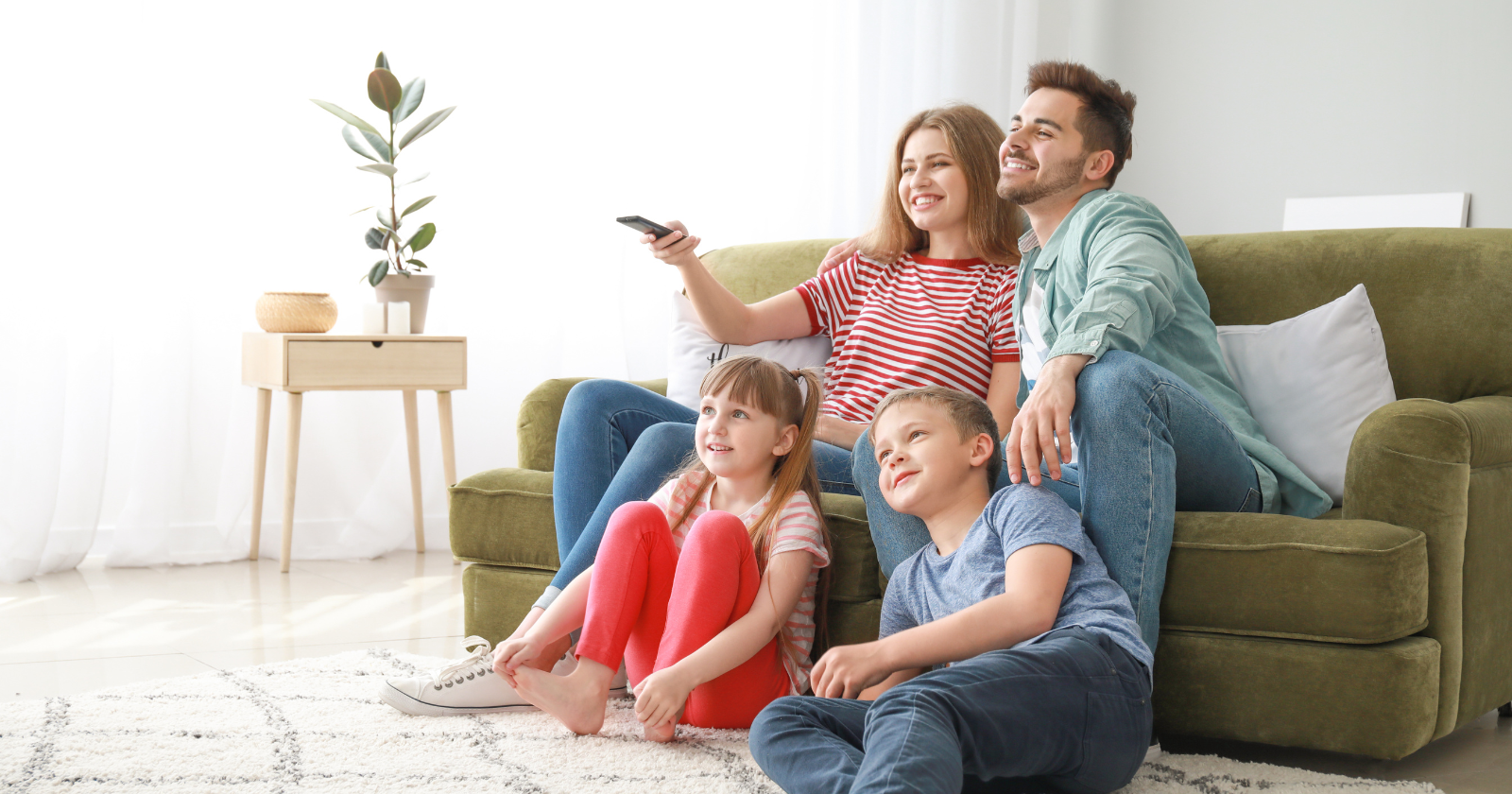There’s something special about the shows we grew up with—the ones that played softly in the background while the smell of dinner drifted through the house, or the ones we watched curled up on the couch, half-asleep against a parent’s shoulder.
Even now, when my daughter Elise begs for “just one more” episode of Bluey, I can’t help but think back to the shows that quietly shaped my own childhood—and, honestly, the rhythm of family life for a whole generation.
So today, I want to celebrate seven of those shows.
The ones that didn’t just entertain—they helped define what togetherness felt like.
1) Mister Rogers’ Neighborhood
Let’s start where it all began—with the man in the cardigan who taught millions of kids that it’s okay to have feelings.
Mister Rogers’ Neighborhood wasn’t flashy.
No quick cuts, no loud music.
Just a soft voice saying, “I like you just the way you are.”
Looking back, I think Fred Rogers gave kids something rare: stillness.
In a world that’s constantly rushing, he modeled what calm looked like.
As Fred himself once said, “Play is really the work of childhood.”
That idea changed everything about how I approach parenting.
Now, when my kids spread out a mountain of blocks or ask endless “why” questions, I try to see the learning in the mess.
Rogers’ show was never about being perfect—it was about being present.
That’s a lesson I’m still practicing.
2) Sesame Street
It’s impossible to talk about childhood TV without mentioning Sesame Street.
Where Mister Rogers felt like home, Sesame Street felt like the world.
- If your adult kids blame you for every problem they have, these 8 truths will set you free - Global English Editing
- Psychology says people who stay mentally strong in their 70s and beyond share these 8 small routines - Global English Editing
- If these 7 “little things” still bring you genuine joy, you’ve figured out something about aging that most people never will - Global English Editing
It was noisy, colorful, and full of neighbors who didn’t look or sound the same—and that was exactly the point.
I remember sitting cross-legged on the floor, watching Big Bird and Grover argue about the alphabet, and somehow walking away having learned not just letters, but empathy.
The show’s genius wasn’t just the puppets—it was its humanity.
As Joan Ganz Cooney, the show’s creator, once said, the goal was to “prepare children for school and for life.” It did both.
Now, when I rewatch episodes with Elise, I notice how naturally it weaves in diversity, friendship, and curiosity.
There’s a reason Sesame Street still works 50 years later—it never talks down to kids. It just meets them right where they are.
3) Arthur
If Sesame Street was about the world, Arthur was about the small moments of childhood that felt enormous.
Remember those episodes about losing a library book, or arguing with a friend?
For a kid, those were real, big-deal moments.
I used to watch Arthur after school, usually with a peanut butter sandwich in hand, and it always hit me how grounded it felt.
It didn’t sugarcoat growing up.
Sometimes Arthur got things wrong.
Sometimes D.W. was maddening.
But there was always a quiet message underneath: you can mess up, and still be loved.
As a parent now, I see how important that is.
When Elise spills juice or Julien refuses to nap, I remind myself that learning to recover from mistakes is part of growing resilient.
Arthur made that lesson feel normal—like every family was figuring it out one small conflict at a time.
4) The Magic School Bus
 If there was ever a show that made learning feel like an adventure, it was The Magic School Bus.
If there was ever a show that made learning feel like an adventure, it was The Magic School Bus.
Miss Frizzle was chaos—in the best possible way.
She encouraged kids to “take chances, make mistakes, get messy!” (words that every parent should probably tattoo on their forearm).
I was fascinated by that show’s sense of wonder.
The Frizz didn’t just teach science; she taught curiosity.
Every episode said, “The world is full of mystery—go see for yourself.”
And honestly, that’s what I try to channel at home.
When Elise asks how clouds work or why Julien’s hair stands up after a bath, I don’t always have the answers.
But instead of shutting it down with “just because,” we look things up together, experiment, or make a game out of it.
Curiosity is contagious.
The Magic School Bus was proof.
5) Full House
Not every defining show was animated.
Some, like Full House, just quietly taught us what family looks like in all its imperfect glory.
Sure, it had its cheesy moments—those slow, sentimental music cues before every hug—but underneath was something that stuck: family isn’t about who’s in the picture; it’s about how you show up for each other.
As a kid, I didn’t notice the deeper stuff—the grief, the rebuilding, the way those three men parented together in their own clumsy, heartfelt way.
But now, as a dad, I see it differently.
That show normalized caregiving that wasn’t strictly maternal.
It showed that dads could be nurturing, goofy, and emotionally available.
That’s a legacy worth keeping alive.
6) Blue’s Clues
There’s something brilliant about how Blue’s Clues slowed things down for kids without dumbing anything down.
Each episode was a puzzle—a mystery to be solved—but at a child’s pace.
Steve (and later, Joe) looked right into the camera and asked, “What do you think?”
Then he waited.
That pause was magic.
It gave kids the power to think for themselves.
Developmental experts have praised the show for that structure—it taught children how to pause, observe, and infer.
Dr. Alice Wilder (one of the show’s producers) once said, “We wanted to make kids feel like they were the most important person in the room.”
And they did.
Now, when I watch Julien babble back at the screen during Bluey or Daniel Tiger, I realize the power of that approach.
Kids crave engagement, not entertainment.
7) Boy Meets World
This one hits deep. Boy Meets World carried so many kids from grade school to early adulthood, showing that growing up is a series of choices—and each one shapes you a little more.
Cory, Topanga, Shawn, Mr. Feeny… they weren’t superheroes.
They were flawed, funny, and deeply human.
The show didn’t shy away from things like friendship drift, self-doubt, or family tension.
And Mr. Feeny—what a gift. His line from the finale still gets me: “Do good.” Simple as that.
When I think about the kind of dad I want to be, I come back to that idea often. Not perfect. Just good.
The kind of steady that makes your kids feel safe even when the world feels uncertain.
Final thoughts
If you look closely, each of these shows—Mister Rogers, Sesame Street, Arthur, The Magic School Bus, Full House, Blue’s Clues, and Boy Meets World—shared a quiet message:
You belong. You’re learning. You’re loved, even while you’re still figuring things out.
These weren’t just TV shows—they were small cultural anchors.
They gave parents a breather, sure, but they also modeled empathy, curiosity, forgiveness, and humor.
And now, watching my kids fall in love with Bluey or StoryBots, I see the through line.
The best shows don’t just entertain—they remind us what it means to grow together.
So maybe, next time your family winds down with an episode or two, take a second to notice what’s really happening.
Those small, shared moments? They’re building something big.



